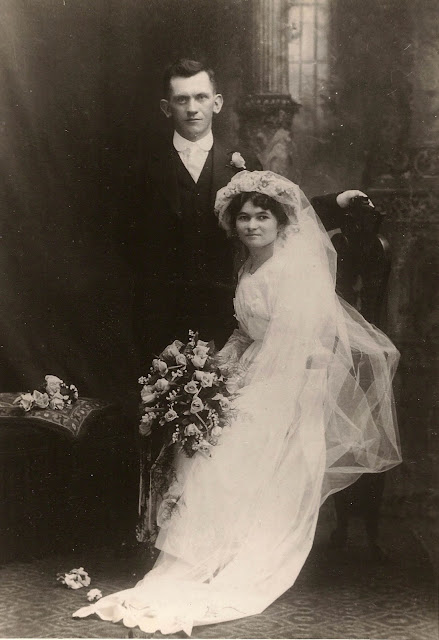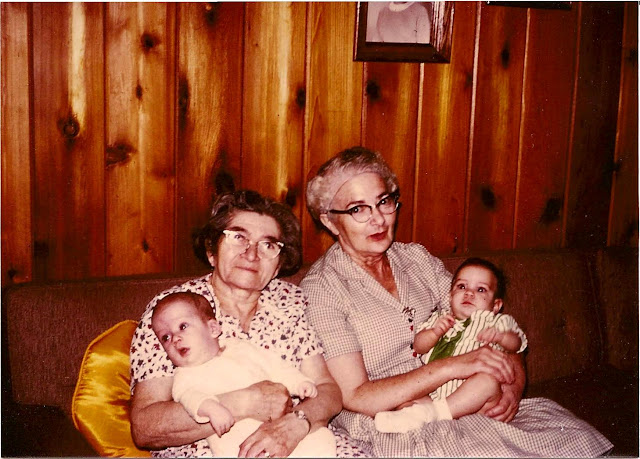Mina's Legacies
I imagine the scene played out something like this: Bundled up in her winter coat, 12-year old Mina Appel longs to press through the throngs of passengers to claim a spot on the port side rail. But she has younger brothers and sisters to mind, and her mother Reise insists that they all stay away from the heart of the crowd, where little Franciska and Salli could be trampled. The breeze sweeping the deck of the Graf Waldersee stings Mina’s face and numbs her ears, but she welcomes the relief it provides from the sour smells of a damp 10-day voyage in steerage class.
Mina has a taste for adventure, but after the last two punishing weeks all she can think about is the life she has left behind in the town of Olublo, Hungary: her friends from school, the horses in their stables, the comforts of a house big enough for her family of 10. She knows she can expect a much harder life at the end of this voyage, in a foreign country whose language she does not speak, where her family does not have roots generations deep.
When Mina’s reverie is broken by cheers erupting from the rails and spreading across the deck, she stands on her toes and cranes her neck, eager to catch a glimpse of the copper-clad symbol of this new world: the Statue of Liberty. Later on this afternoon of December 29, 1905, Mina and her family will be processed on Ellis Island and, after some anxious hours, permitted to enter the United States at long last.
Mina’s father Sigmund awaits them in Milwaukee, where he has been staying with members of Reise’s extended family. In the old country, Sigmund had been a traveler by trade: a dealer in linens who carried his wares by horse and buggy from hamlet to hamlet across Eastern Europe. He is a stern and devout man, protective of Mina and his other children. One of Mina’s treasured possessions is a beautiful white kerchief embroidered with her initials, a special order Papa placed with one of his suppliers.*
In Sigmund’s mind this unwelcome, destiny-altering migration has been forced by events in Olublo. Anti-Semitism is on the rise. Sigmund believes he can no longer keep his family safe in Hungary. His inventory was looted on the night before Yom Kippur, and his oldest sons faced conscription into the army if they stayed. Sigmund sent the boys to Milwaukee two years ago, then followed them a year later, with plans for the rest of his family to join him once he had made arrangements in their new home.
 |
| Leo Spitz, 25, and Minnie Appel, 23, in July 1915. |
Like her mother Reise (“Rose”) before her, Minnie will be married to a stern and industrious man through an arrangement by her parents. Leo Spitz, a tannery worker, will keep food on his family’s table during both the Roaring 20s and the Great Depression. Minnie will provide their four children, all girls, with a stable and comfortable home life.
Minnie and Leo’s third daughter, Ruth, an inheritor of her mother’s adventurous spark, will marry for love at age 19. Her husband Irv Krasno, a Russian immigrant, will work in his family’s Milwaukee egg business alongside his father and brothers. But the Krasno men are proud and stubborn, and their partnership will collapse into a battle of factions. Ultimately Irv and Ruth, with four daughters of their own, will seek their fortune in the west, in California, where they once spent an enjoyable vacation under sunny skies.
Irv and Ruth’s second daughter, Sandy, will meet her future husband Herb Hoffman at a college dance. They will marry in 1965, and have the first of three children in 1967. Sandy and Herb (the son of immigrants from Poland and Israel) will make steadiness and security priorities for their family. They will encourage their children to become members of stable and prestigious professions—doctor, lawyer, teacher—rather than risk-takers.
Their first child, a boy, David, will meet his great grandmother, Minnie Appel—Grandma Mimi—on two or three occasions when she visits from Milwaukee. She will pass away, at age 80, when he is five years old. He will retain only the vaguest firsthand impression of her personality: her affection, and her strength. But all his life he will navigate Mina’s legacies, and those of Sigmund and Rose, Leo, Ruth and Irv, Sandy and Herb: the yearning for adventure, and the bold, even rebellious willingness to risk everything for a better life, intertwined with the craving for stability and an end to upheavals, and the comforts of a well-worn path.
 |
| Minnie Appel Spitz (left), 75, and her younger sister Mary in December, 1967. The baby in Minnie's lap is me (age 2+ months); in Mary's lap, my cousin Julie. |
*More than a century later, Mina’s kerchief survives in a wooden box in my home.
Tags:
Posted: November 15, 2010, 9:27 AM